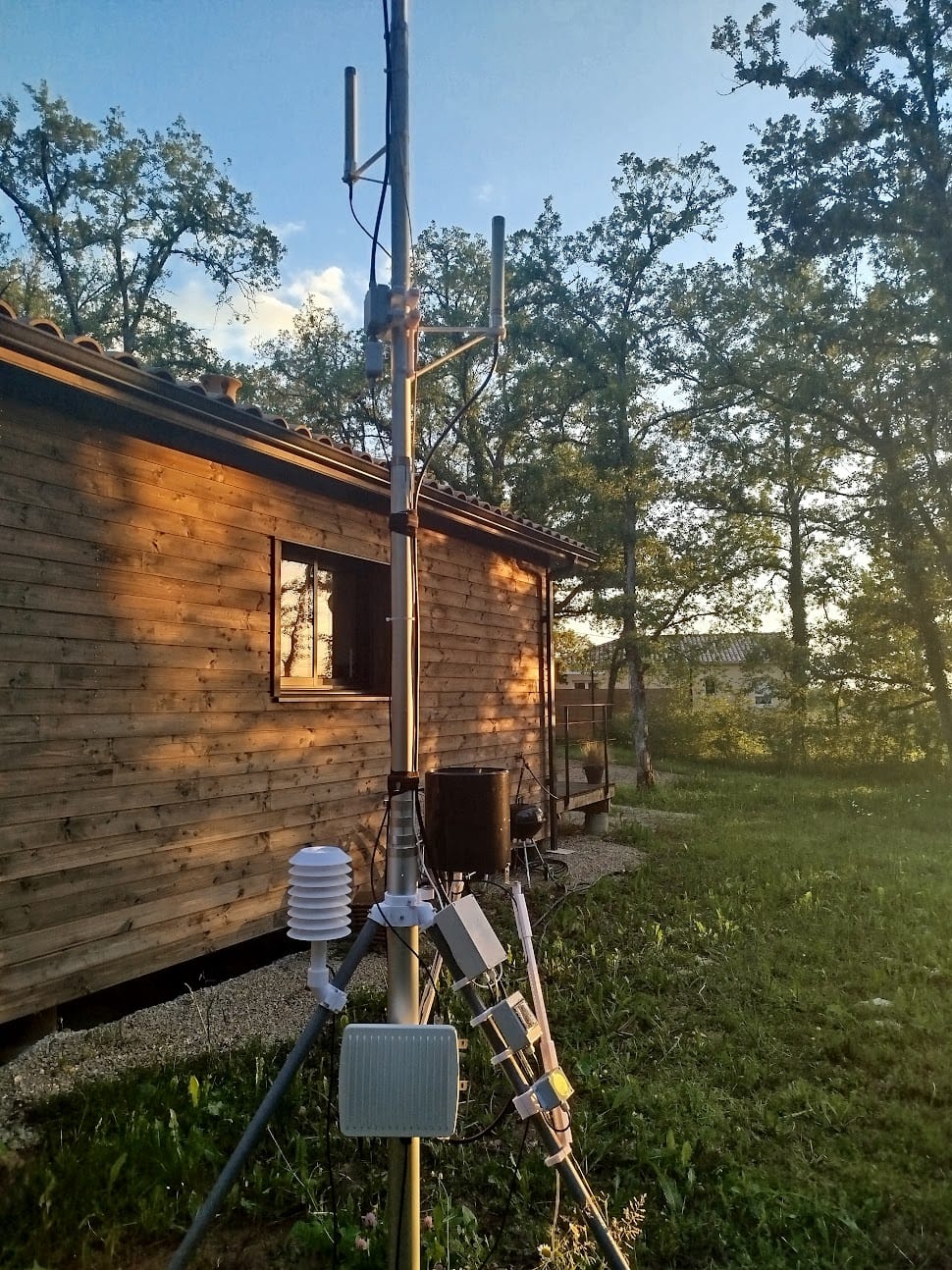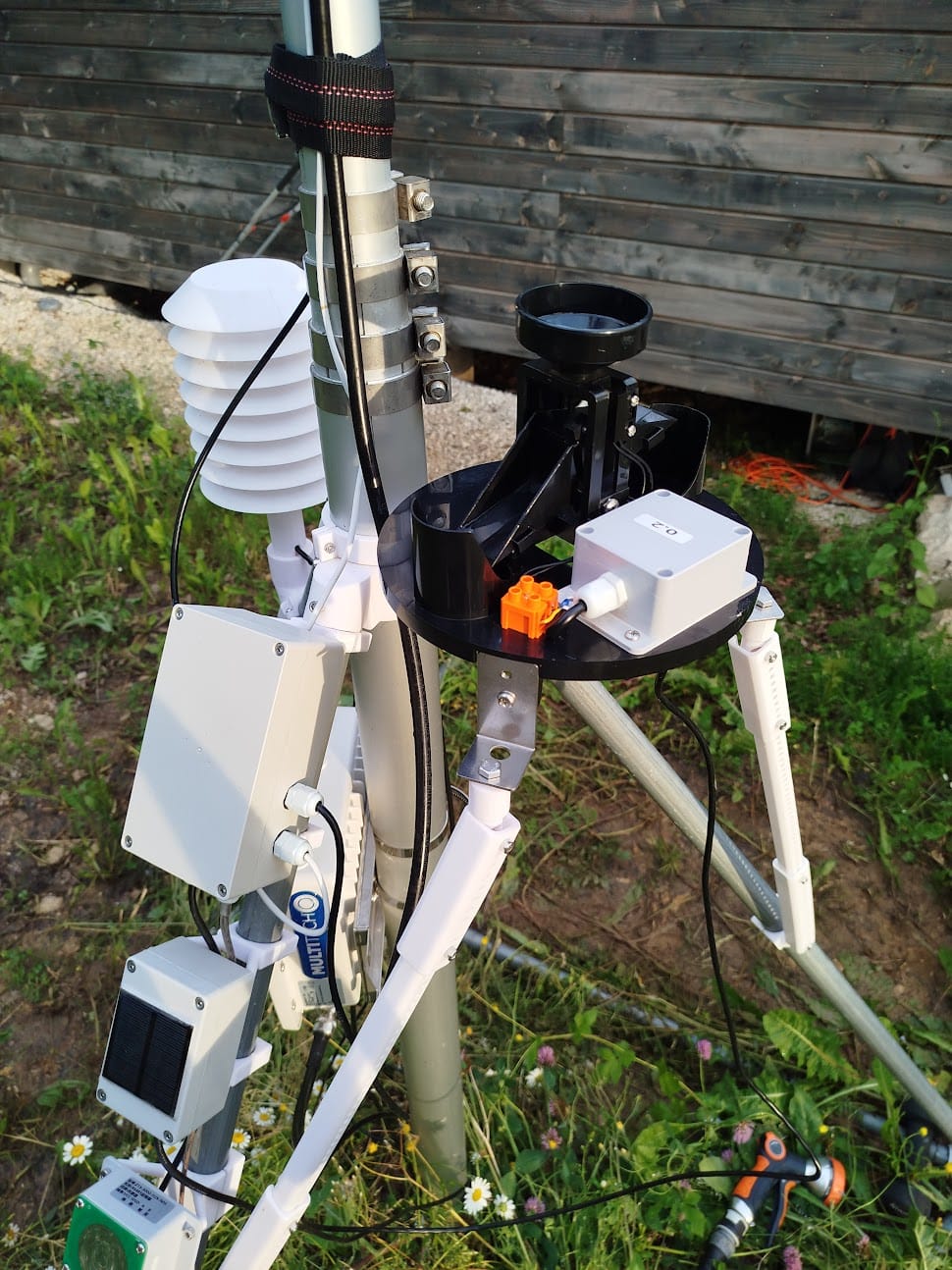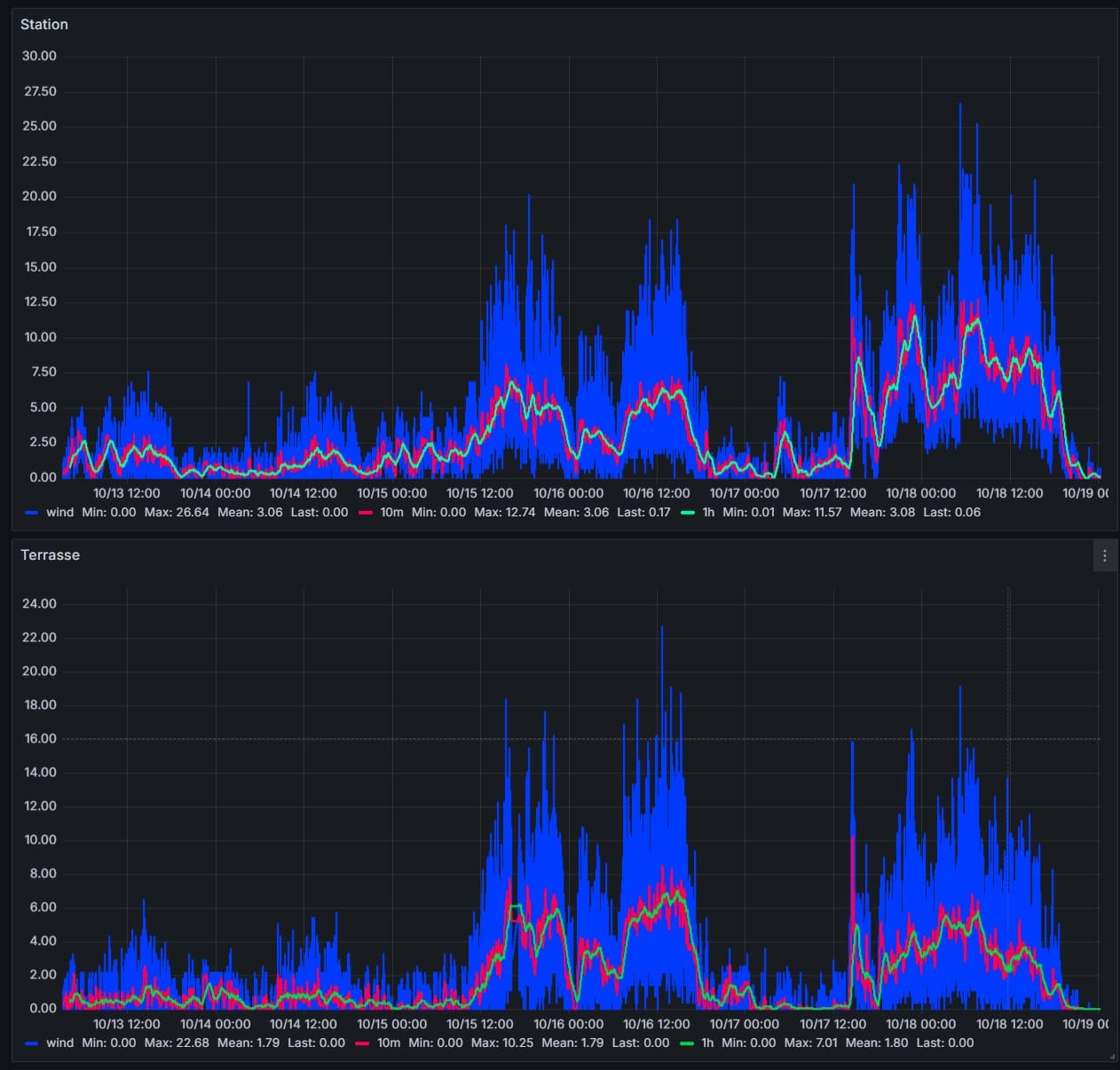LoRaWAN Weather Station Systems
System Components
Basic station:
- BME280: temperature, humidity, pressure (±0.5°C, ±3% RH accuracy)
- Tipping bucket rain gauge (0.2mm resolution)
- Solar panel + 18650 battery (2+ years runtime)
- LoRaWAN transmitter (5km urban, 15km rural range)
Advanced station:
- Cup anemometer (wind speed, 0.5 m/s resolution)
- Wind vane (16-point compass direction)
- UV sensor
- Soil moisture probe (30cm depth)

Temperature, Humidity, Pressure
Sensor selection:
- DHT22: irrigation decisions (±2°C acceptable)
- BME280: HVAC control (±0.5°C matters)
- Vaisala: traceable calibration required
Installation requirements:
- Radiation shield mandatory (white, ventilated)
- Avoid heat sources: roofs, concrete, exhaust vents
- 1.5-2m height standard
Rain Measurement

How tipping buckets work: Rain fills bucket until it accumulates 0.2mm or 0.5mm, then tips, empties, triggers count. No calibration drift, works for years.
Resolution matters:
- 0.2mm: agriculture, flood prediction (detects light rain, accurate intensity)
- 0.5mm: general weather monitoring
Hardware: Davis, Onset, Pessl Instruments with LoRaWAN pulse counter. 10-30 minute transmission intervals. 5-10 year battery life.
Placement requirements:
- Open area, no obstructions within 4x gauge height
- Level within 2° (critical - affects accuracy)
- 1-1.5m standard height
- Clear gateway line-of-sight
- Accessible for maintenance
Wrong location undercounts by 30% due to wind effects. Obstructions create turbulence.

Data processing:
- Running totals: 1h, 24h, 7d, 30d periods
- Rainfall intensity: mm/hour for storm classification
- Distinguishes 20mm over 6 hours (beneficial) from 20mm in 30 minutes (erosion risk)
Applications:
- Frost protection: activate sprinklers only below 2mm/hour (60-70% water savings)
- Urban flood prediction: intensity >15mm/hour triggers pump activation 20-30 minutes faster
- Insurance claims: calibrated gauges with GPS timestamps provide verifiable records
Maintenance:
- Monthly funnel cleaning (5 minutes)
- Annual calibration: pour 100ml, count tips
- Winterization for freeze-prone areas
- Clogged funnels under-report by 20-40%
Wind Monitoring

Sensor types:
Cup anemometers: Standard for long-term monitoring. 3-cup design, 0.5 m/s threshold, ±0.3 m/s accuracy. Brands: NRG, Thies, Vector Instruments. Bearings wear out every 2-3 years in harsh conditions.
Sonic anemometers: No moving parts. Ultrasonic time-of-flight measurement. Measures 3D wind vector. More expensive but maintenance-free except cleaning. Better for icing conditions.
Wind vanes: Potentiometer or magnetic encoder. Mount above anemometer to avoid wake effects.
Installation height:
- Agricultural applications: 2-10m
- Wind energy assessment: 40-120m (hub height)
- Environmental monitoring: 10m standard
- Building-mounted: 2x building height above roofline
Placement rules:
- Open terrain, no obstructions within 10x sensor height
- Building edges create turbulence, not representative data
Applications:
- Wind turbine site assessment: 1-2 years data at hub height. Regional estimates can overestimate by 30% due to terrain effects.
- Agriculture: spray timing requires <5 m/s, frost protection systems use wind + temperature thresholds
- Construction: crane operation limits typically 12-15 m/s
- Aviation: wind shear detection
Data outputs:
- Wind speed (average + gust)
- Direction (degrees from north)
- Standard deviation (turbulence indicator)
- Wind roses (16 or 36-point compass)
- Statistical analysis: Weibull distribution, power density
Maintenance:
- Cup anemometers: bearing replacement 18-24 months coastal/dusty conditions
- Sonic anemometers: annual cleaning (spider webs cause errors)
- Calibration: annual field checks agricultural use, certified lab every 1-2 years wind energy
Data Pipeline
LoRaWAN → ChirpStack → InfluxDB → Grafana:
- 1-10 minute transmission intervals (application dependent)
- Local alerting for out-of-range values
- Historical comparison (current vs same period last year)
- API access for irrigation controllers, HVAC, etc.
- Calculate cumulative rainfall totals, intensity, wind roses
Real Applications
Agricultural monitoring: Multiple stations across hectares map microclimates. Temperature variations affect planting density and yield optimization.
Ski resort operations: Stations at different altitudes track temperature and snow depth. Feed snowmaking systems - run compressors only when optimal (<-2°C, <60% humidity).
Urban planning: Map temperature variations across neighborhoods. Identify heat islands, inform urban greening decisions.
Renewable energy: Site-specific wind data over months beats regional estimates. ROI calculations depend on accurate wind speed distribution.
Hardware Components
You source:
- BME280 or equivalent temp/humidity/pressure sensors
- Tipping bucket rain gauges (Davis, Onset, Pessl)
- Cup anemometers or sonic anemometers
- Wind vanes (if directional data needed)
- LoRaWAN transmitter with analog/pulse inputs
- Solar panels and battery systems
- Mounting mast and hardware
- Lightning protection (tall masts)
- LoRaWAN gateway (if needed)
Typical specs:
- LoRaWAN range: 5-15km depending on terrain
- Battery life: 2-5 years (depends on transmission frequency)
- Solar systems: 10-20W panels with 20-50Ah batteries
I specify what you need based on accuracy requirements and budget. I don't sell hardware.
What I Provide
Services:
- Sensor selection and specification
- Installation site assessment and placement planning
- Network planning and coverage analysis
- Data pipeline setup (InfluxDB + Grafana)
- Dashboard configuration and alerting
- Wind rose and statistical analysis
You own everything:
- Complete system source code
- Self-hosted infrastructure (or cloud if preferred)
- All calibration and installation documentation
- No monthly fees after setup
Ready to Get Started?
Get expert guidance on implementing LoRaWAN solutions for your organization.
Contact Us